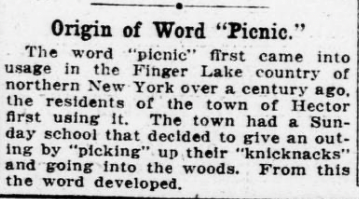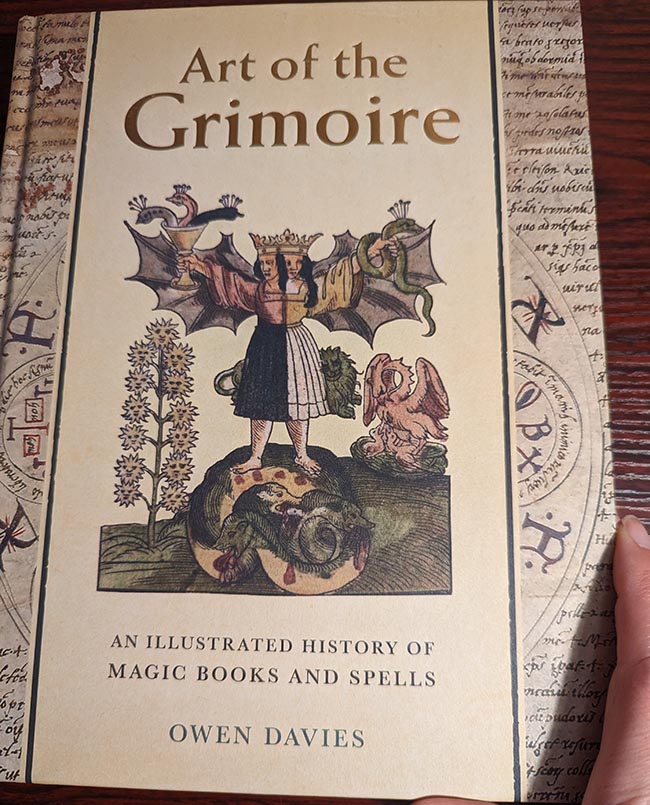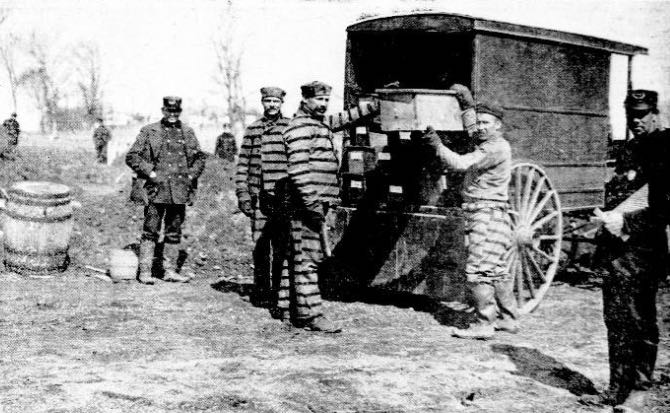
Potter’s field may seem like an odd name to give to a burial site that is meant for the bodies of the unknown, the poor, and the executed, but the term comes from the Bible. In Matthew 27:7, it tells us: “And they took counsel, and bought with them the potter’s field, to bury strangers in.” Sure enough, potter’s fields were filled up with the unwanted, the shamed, and the forgotten. There exists inside each grave a story that will break hearts, move the soul, and give witness to the price of evil. [SOURCE 1]
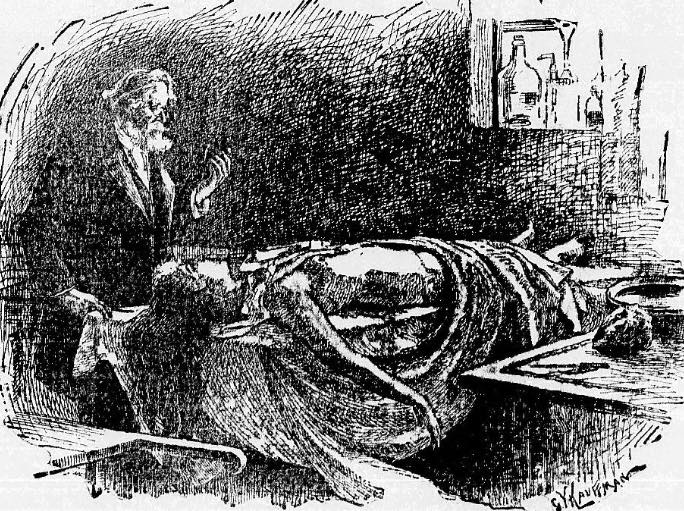
Graves For Fallen Women
The early 1900s had a severe problem with prostitution and the “white slave ring” where young women from the United States and other countries were traded and sold for sex. The young women were used and thrown away after their “owners” made their profits. Even sadder is that many of these women eventually ended up in potter’s field. A newspaper article published in 1917 labelled potter’s field as the “most hideous spot on earth” and the author went on to say that he had just “looked into the bottom of the hell-pit that is the ultimate end of the majority of the little victims of the white slave ring.” Within the potter’s fields across the U.S. were the bodies of the victims, “the last resting place of that vast army of doomed girls of the Tenderloin who every year disappear into the great unknown.” No one claimed the bodies, either out of shame, lack of money, or because the young women were so far away from home that none of their relatives knew where to look for them. The unclaimed bodies from New York City were shipped to Hart Island where “hard-faced criminals and degenerates” would unload them. The coffins were labeled with the name of the hospital or morgue they came from. Boxes labelled with the word “Refuse” meant that the remains had been used for dissection. The boxes were planted in large trenches, layered on top of the other. After the earth was replaced, the spot was marked with a numbered board. [SOURCE 2]
Threats To Move Body
What happened to people who were not able to pay their debt to the undertaker? In today’s world, the account would be sent to a creditor or the matter would be taken to court, but 1908 was a whole different world where threats were often made and sometimes carried out. In one reported case, a widow had lost her only son who died at the young age of seventeen. She paid half the debt for the funeral service and pawned off nearly all her remaining belongings to make further payment for the funeral. On top of that, her young daughter was also working in a toy shop to raise the funds they needed to survive. The undertaker was angry that her full debt was not yet paid so he wrote her a letter. In it he told her that if she didn’t pay the remainder immediately, he would have her son dug up and sent to potter’s field. Fortunately, the woman was smart enough to take the matter to court and the judge was so angered by the situation that he told the undertaker:
“That is the most cruel and inhuman thing I ever heard of a man doing. You now you couldn’t do such a thing as remove that body, and you have no compassion or pity in you. I lost my only son last June, and if you had written me such a letter as that I would punish you, if I had to whip you with my fists.” [SOURCE 3]
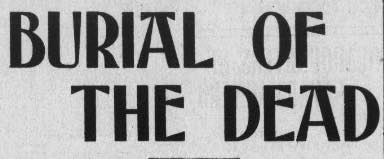
Soldiers of Misfortune
In 1913, the Hoboes’ Union of America (the trend was to have a union for just about everything back then) announced that on Memorial Day they would be honoring for the first time the unknown people buried in the potter’s field. The union asked for “assistance from people of all parties and beliefs” to make an eventful day of remembering the “soldiers of misfortune” who were buried and forgotten in the fields. The bodies were not only those of the poor, but also of people who were not identified at the time of their death, including children, soldiers, and victims of murder. Since this would be the first time a memorial event would take place at a potter’s field, many newspapers across the U.S. reported on the event and other cities made an attempt to follow in Chicago’s footsteps by allowing people to bring flowers to the graves of the forgotten. [SOURCE 4]
Bones Scattered
A report came out of Columbia, South Carolina in 1910 about an undertaker who was cutting corners with the bodies going into the potter’s field. The undertaker was first fined for $20 for burying two bodies inside of one coffin. It was also discovered that the man was burying some of the forgotten without any clothes on. The potter’s field was reported as being extremely overcrowded and many times the undertaker would dig a body back up after it had been in the ground for several years. The bones of the dead were removed from the hole and a new body was placed within. The report stated that there were a great number of human bones scattered about the potter’s field and that an investigation into this tragedy would probably happen. The practice of throwing bones about after the flesh was off of them may have saved on space and would have prevented the city from having to buy more land, but visiting the potter’s field must have been gruesome. [SOURCE 5]
Old Music Man
A sad story found in a newspaper that came out of New York City, 1906, is enough to make a person pay a little more attention to those who are more unfortunate than they are, especially during the winter months. There was an old man who sat outside on the pavements of the big city and played an accordion for tossed pennies. Since his accordion had about 36 patches on it, the music he played was not recognizable, but the little children liked it nonetheless and would often give the poor man what pennies they had. At night, the man went into a cellar where he was allowed to sleep. “The bed in the cellar consisted of some old burlap and a little straw. Time and again the tenants complained to Mrs. Brown, the housekeeper, about the old man sleeping there, but Mrs. Brown is a big-hearted Irishwoman and somehow she always forgot to turn the old man out.” His last night alive, it was assumed that he went to his bed hungry because no one could say that they gave him any coffee or bread to keep him warm that day. He froze to death overnight. After being found, he was taken to potter’s field where he was buried with his accordion. The children of the neighborhood mourned the “old music man” who had played his patched accordion for them for over 12 years. [SOURCE 6]

Baby Farm Bodies
There are a lot of horror stories about the baby farms in Australia, England, and the United States, although I am sure nearly all countries have been guilty of this ugly past time. Parents who could not afford to take care of their babies and mothers who had to work, but had no help at home, sometimes handed their babies over to what was called a baby farm. For a price, the head of the baby farm would provide basic care for the baby and, in some instances, would find a baby a new set of parents.
In a case that came out of Chicago in 1914, the woman in charge of a baby farm was being investigated. The report said she had charged several mothers anywhere from $15 to $45 for the burial of their deceased babies. However, further investigation into the deaths revealed that only three of the bodies were buried in potter’s field, where there is no cost to bury the unwanted, and the bodies of the other babies who were said to have died were missing. [SOURCE 7]
Union Soldier Buried In Potters Field
A Union soldier, crippled and depressed, went into a rental cottage and overdosed on laudanum. His body remained in the cottage, rotting away in the Virginian early spring for another two weeks until a man, looking for a cottage to lease, entered the little building. The man discovered a ghastly sight of the soldier’s decomposing body on the floor. The authorities were contacted and the death was ruled a suicide. The body, that of a Union army soldier who had served with distinction for two years in Maryland, was placed in a pine box, unstained, and buried in the potter’s field. The soldier, who had received an honorable discharge, had no pension and worked as a watchmaker. When the National Soldiers’ Home discovered that a soldier was placed in the potter’s field, they immediately went to work to try and get the remains moved to a national cemetery. All was agreed upon and the soldier was removed from potter’s field and given a proper burial. [SOURCE 8]
From Pauper To Pickle
It was 1904 and a man lay sick in an Ohio hospital. Things looked grim and he was asked if he had any living family who should be notified in case he died. He told them he had a niece in Missouri. The 72-year-old did not pull through and a notice was sent to his niece. The hospital received no answer in 48 hours and, as per their policy, they boxed up the man’s body and sent it to potter’s field. Sometime later, two of the man’s nephews showed up at the hospital to visit him and were surprised to learn of his death. Wanting to reclaim his body for a proper family funeral, the two young men accompanied the undertaker to the potter’s field. Once there, however, they learned that their uncle had not been buried at all. He was residing in a pickling vat at a medical college, awaiting dissection. Calls were made and the uncle’s dissection was halted. The nephews were able to return the body to its home of birth, Kentucky, and give him a funeral. [SOURCE 9]
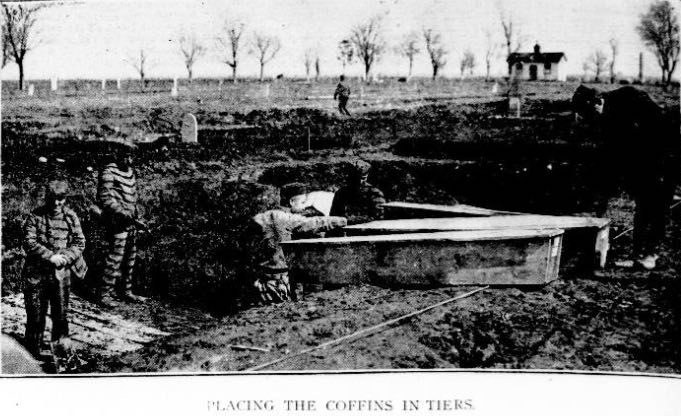
The Wife Beater
Sometimes entire families would wind up in the potter’s field together. The families were always poor or down on their luck and they often died of either violence or disease. In 1906, a particularly sad case was reported in the newspapers across the country. A 60-year-old man, W. W. Berry, beat his wife and struck her in the stomach with an iron bread pan. She had only given birth a week before the beating and being so hurt, she just managed to escape her husband by running out into the yard. She immediately collapsed onto the ground. A neighbor took her in and tried to nurse her back to health, but she never regained consciousness and shortly thereafter she died. The husband was arrested and his baby daughter was taken in by another family. The husband died while in jail and never stood trial. The infant daughter also perished, and all three were buried together in the potter’s field. [SOURCE 10]
The Waiting Child
Floaters would often be fished out of rivers, lakes, and canals, and because of the state of their bodies, no one was able to identify them. Some were strangers to the area, many were society’s outcasts, and a few were genuine travelers who met up with a horrible fate. In 1902 a report was published in an Ohio newspaper about the tragedies that lay in the potter’s field. One particular story came out that was published again in newspapers across the U.S. in the hopes of solving the mystery. A middle aged man was found floating in one of the canal locks in Ohio. His body was pulled out of the water and his pockets were searched. Inside one of his pockets, a letter was found. All of it was damaged except for the salutation, “Dear Father,” written in a child’s handwriting. Efforts were made to identify the man, but no one came forward. He was eventually placed in the potter’s field, and his child never learned what had happened to his or her father. [SOURCE 11]

